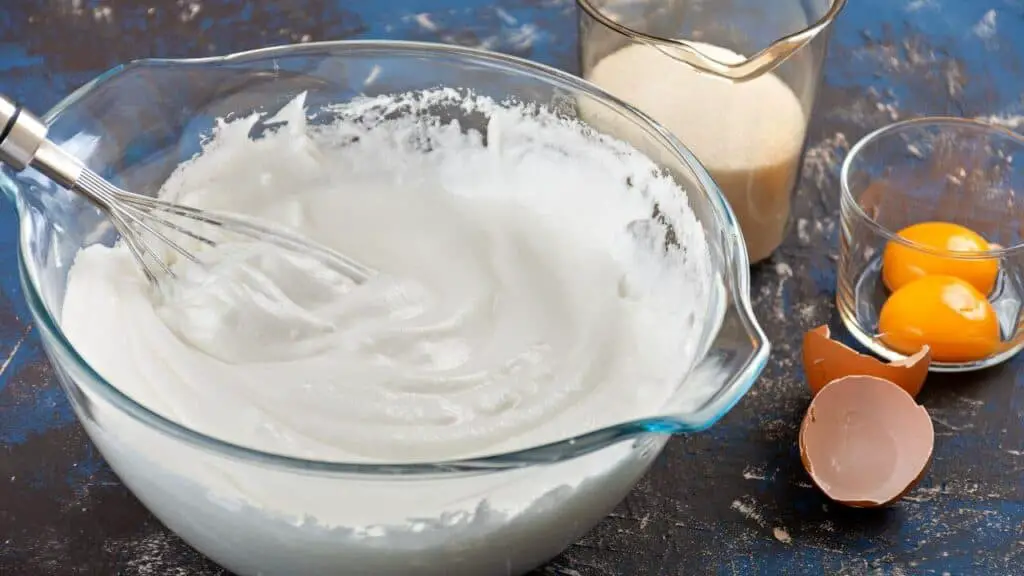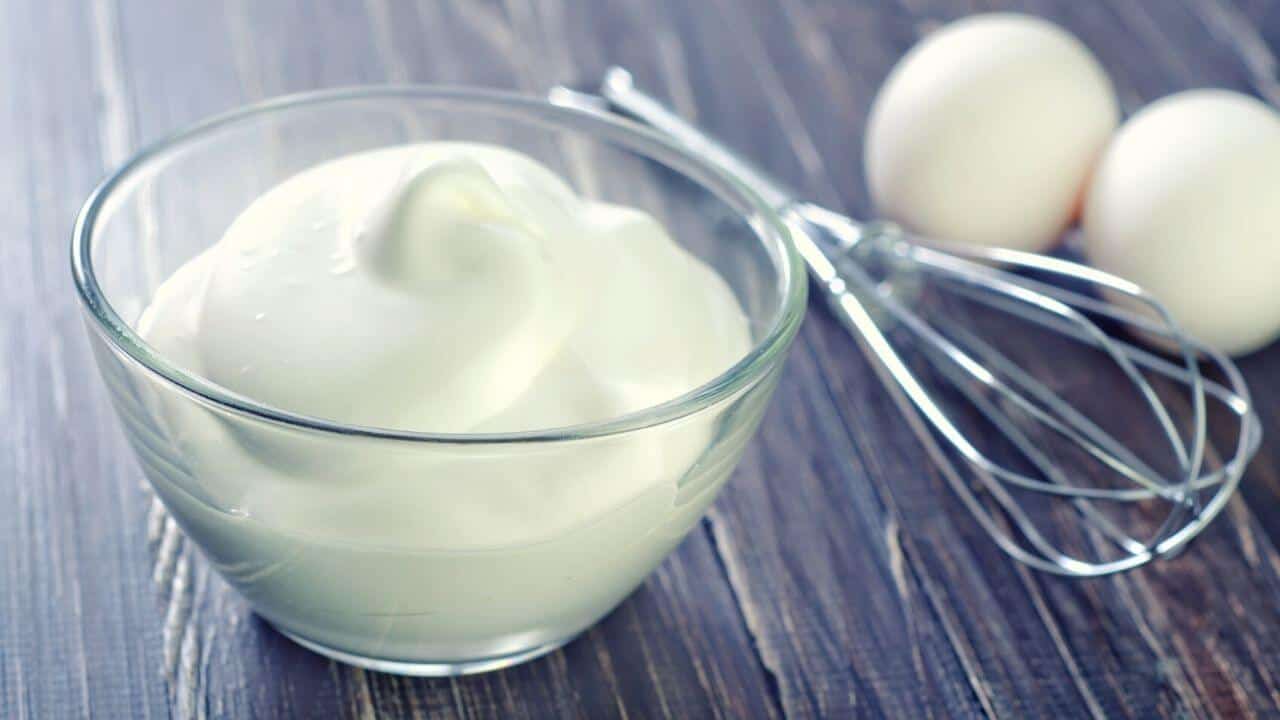Last Updated on May 19, 2023 by River Tree Farms
Eggs are important ingredients in many delicious meals. You need them for your cakes, French toast, egg rolls, pasta meals, and more. However, the question ‘can you whip egg whites in a blender has probably crossed your mind at some point. The answer is yes, you can.
When you whisk egg white, it may not form peaks. Instead, the result will be slightly chunky. If you beat egg whites in the blender, the sharp blades cut through, making them tough and rubbery. Instead of whisking, blenders cut through the egg whites.
If your blender has varying speeds, blend your eggs while constantly alternating them. Start with low speeds and keep increasing. An egg blender could work perfectly as well. Although whipping egg white in a blender is possible, it doesn’t always yield the best results.
How to Whip Egg White In a Blender
- Separate the egg white from the yolk and put the white in your blender
- Turn it on and set it to low speed
- Let it run for a few minutes, and add tartar cream or sugar
- After the soft peak form, you can add any other ingredients. Let the blade run until the stiff peak forms
- Turn off your blender and use the white as preferred
What Is the Alternative?
Usually, egg whites are whipped until they foam. They can then be used to make cocktails, soufflés, cakes, and other dishes. While blending egg white is okay, it can affect the texture of your whites. After whipping up, add a few drops of lemon juice, cream of tartar, or some vinegar. The acidity will give you stronger foam. Whisk in a copper bowl and pull out the whisk regularly. This way, the peak can develop without much effort.
What Is the Right Equipment for Whipping Egg Whites?

If you have some knowledge regarding egg preparation, it is easy to assume that it always applies to the preparation of egg whites. However, egg whites require some level of special treatment. You will get the best results using an electric mixer or whisk balloon. Here is some equipment to use:
1. Electric Hand or Stand Mixer
Consider using a stand or electric hand mixer to whip your egg whites. The only difference between electric hand and stand mixers is the way they are operated. Customize the speeds and whisk attachment to attain your ideal finish when whipping egg whites.
Start whipping at the lowest speed on your mixer and increase to medium-high until you see small bubbles. When using an electric hand mixer, start with the whisk attachment. During the first stage, you should see some form. It will progressively start producing soft peaks. Note that all mixers can over-process your egg whites.
2. Fork
Consider using a fork to whip our egg whites. While this may not sound very practical, it works for a small number of eggs. Forks work just like whisks if you use them in a circular motion. Regularly lift the whites to incorporate air.
3. A Whisk Balloon
Whisk balloons are essential when making pastries. Consider using them to beat and improve the volume of your egg whites. These hand-whisks are shaped like balloons at the top, with wires to help separate the whites.
The best thing about whisk balloons is that they give you control over the consistency of your eggs and the amount of foam produced. The equipment gives you a stiff peak, and the result is much glossier than when using a blender.
When using your whisk balloon, pay attention to your bowl. It has to be perfectly clean as oil residue could undo your efforts. Consider rubbing the inside of the bowl with some salt or lemon. Separate the egg yolk from the whites carefully, as even the tiniest drop of yolk could keep your whites from foaming. A copper bowl will give you the best finish. However, stainless steel is a good option as well.
4. Immersion Blender
Immersion blender egg white is perfectly finished. These blenders may be a lot like handheld mixers, but their functionality is different. Immersion blenders are much more versatile as they let you switch between different speeds. Pay attention to the process, as there is a chance of over-whipping your egg white.
Why Aren’t Your Egg Whites Getting Fluffy?
There are a few reasons why your eggs may not be fluffing up. Here are a few mistakes that you could have made during the process:
1. Using Cold Eggs
Before beating your eggs, take them out of the fridge and let them warm up to room temperature. Cold eggs are unlikely to expand and fluff up as much as they should. In addition, you may have a hard time separating the whites from the yoke if your eggs are cold.
2. Dirty Bowl
If you put your egg white in a dirty bowl, it might not whip well. Always remove residue and clean your bowl before use.
3. Wrong Equipment
Some equipment is better for whipping eggs than others, Plastic containers, for example, are not ideal. They retain oil and can affect the whipping process. The best bowls for the process are aluminum and copper. The ion particles in copper bowls and whisks mix with whites, improving their consistency.
4. Adding Ingredients too Early
Adding sugar and other ingredients too early could keep your eggs from fluffing up. Add ingredients during soft peak. Adding tartar cream, sugar, or anything else before this stage could have a significant effect.
5. Overbeating
Overbeating your egg whites renders them useless. If they are too soft, dry, or grainy, you may fail to get the desired texture in your food. When beating your egg white, you need to time the process. Beat them long enough to make them stiff but not so long that they become too soft.
Conclusion
Can you whip egg whites in a blender? Yes, you can. However, note that this may affect the final finish of your eggs. Since blender blades cut through your whites, the end result is super soft. Other alternatives for whipping your whites include forks, mixers, whisk balloons, and immersion blenders.

